Meike MK-MT24 Review: Wireless Macro Twin Flash Comparison with Nikon R1C1
About the Meike MK-MT24
The Meike MK-MT24 Wireless Macro Twin Flash was first announced in December 2017 and available for sale in January 2018. Its first launch is available only for Nikon DSLR cameras with a hotshoe, while versions for Canon DSLRs would be available in April 2018, and Sony FE in May 2018.
Like the Nikon R1C1, the Meike MK-MT24 consists of a commander (MK-GT620) and two small flashes (MK-R200) that can only be triggered wirelessly. Everything currently comes as a set, but the commander and flashes can be also purchased individually.
This review was written over the span of a month where I took over 1200 shots in the field. If you find any points missing, please feel free to let me know via the comments below.
Meike MK-MT24 vs Nikon R1C1
This macro twin flash system is obviously designed based on the Nikon R1C1 so a huge focus of this review would be based on comparisons between these two flash systems. Ironically, the model number “MK-MT24” mimics the Canon MT-24EX twin flash system but has got nothing to do with it.
This review will focus on several important factors that will affect the usability of a wireless twin flash system for macro photography in the field.
Why Wireless Flash?
Easy Positioning of Flashes
Many other macro flash systems exist. Some are wireless, while some come with cables or flexible arms. The main reason for my choice of wireless systems is in the flexibility of positioning the flash. I often place the flashes over a meter away from the camera — something that is not possible with the Canon MT-24EX nor Kuangren KX-800 for example.
Add More Flashes
I like the option of adding more flashes as and when required. Sometimes I carry up to 5 flashes (for various purposes), all handheld and easily controlled.
Cheaper and Easier Replacements
Should one component fail in a wireless flash system, I can easily get replacements at a much cheaper price without having to replace the entire set. They can also be easily replaced with spares if any unit fails in the field.
1. Price
The launch of this flash might have been timely with Nikon’s latest bodies D850 and D500 opting to exclude the onboard flash in its designs. Many photographers rely on the onboard flash to trigger their SB-R200s to save on cost and weight. With these new camera bodies, they would need to purchase the Nikon SU800 commander (US$249) which costs almost as much as the entire Meike MK-MT24 set (US$299). It makes this new flash system a very viable option for light-weight wireless flashes.
| Meike MK-MT24 | Nikon R1C1 |
| US$299 | US$775 |
| Twin Flash Set (Nikon) | Twin Flash Set |
| US$99 | US$337 |
| MK-GT620 (Nikon) | SU800 |
| US$99 | US$165 |
| MK-R200 | SB-R200 |
* As of 21 April 2018, we received notification that the Sony and Canon versions will cost $54 more than the Nikon version for the MK-MT24, or $21 extra each for the MK-GT620 commander or MK-R200 flash.
Prices were obtained from nikonusa.com and Meike in January 2018. The Meike MK-MT24 is less than half the price of the Nikon R1C1, so the main question on everyone’s minds is… does it compromise on anything to be that affordable?
2. Wireless Signal Type
The Meike MK-MT24 uses Radio Frequency (RF), while the Nikon R1C1 uses Infra-Red (IR). The biggest difference between the two is that RF does not require line-of-sight but IR needs the flash sensor to be reachable by the commander. I have encountered many situations where my SB-R200s refused to fire because the IR sensors were blocked, so the use of RF is a huge improvement for me. The RF signal is specified to be stable within 15m at any angle and position, and over 100m in an open environment.
The MK-R200 can be set to optical trigger slave mode, which allows it to be triggered by any flash. This is useful when sharing the flash with friends who are using other flash systems.
| Meike MK-MT24 | Nikon R1C1 |
| 2.4G Radio Frequency | Infra-Red |
| Line-of-Sight not Required | Requires Line-of-Sight |
| Option for Optical Trigger |
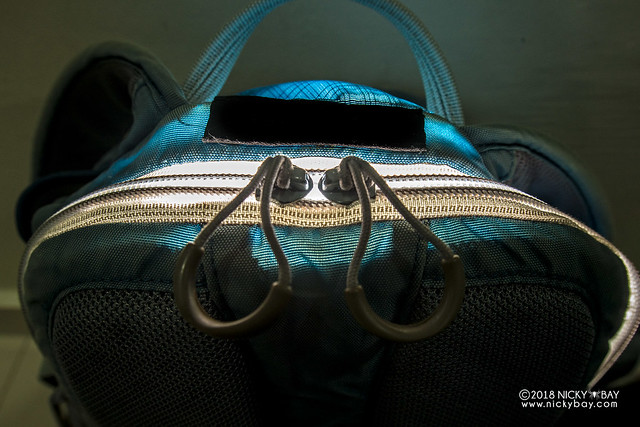
The MK-R200 can be triggered without a line-of-sight and even from inside a bag!
3. Battery Type
The Nikon R1C1 uses a single 3.0V CR123 for each flash and commander. These batteries are typically expensive and reliable rechargeable ones are very difficult to find. For the Meike MK-MT24, the commander uses 2xAA and each flash uses 2xAAA. AA and AAA rechargeable NiMh batteries are easily available but the number of batteries would double, making it a hassle to charge. When desperate, AA and AAA alkaline batteries are also easily available in many shops.
Interestingly, both the MK-R200 and MK-GT620 come with micro-USB sockets for battery charging and firmware updates. Useful when you have lots of USB chargers but not enough battery chargers.
| Meike MK-MT24 | Nikon R1C1 |
| 2xAA & 4xAAA NiMh | 3 x CR123 Li-ion |
| 2x number of batteries to charge (6) | Less batteries to charge (3) |
| Easy to find rechargeables | Difficult to find rechargeables |
The next question would be on the number of shots possible with a set of fully charged batteries. I don’t have accurate reports on this, but I have tried slightly over 400 shots at 1/4 power on the Meike MK-MT24 before I had to change my Eneloop AAA batteries.
4. Weight
The weight differences between the 2 systems are minimal with the Meike MK-MT24 weighing a total of 408g, about 38g (~10%) lighter than Nikon R1C1 which weighs about 446g.
| Meike MK-MT24 | Nikon R1C1 |
| 122g | 135g |
| Each flash including 2xAAA | Each flash including 1xCR123 |
| 164g | 176g |
| Commander including 2xAA | Commander including 1xCR123 |
| 408g | 446g |
| Total weight including batteries | Total weight including batteries |
5. Flash Power / Guide Number
Based on specifications, both the Nikon SB-R200 and Meike MK-R200 have a guide number of ISO100=10m/33ft.
| Meike MK-R200 | Nikon SB-R200 |
| ISO100=10m/33ft | ISO100=10m/33ft |
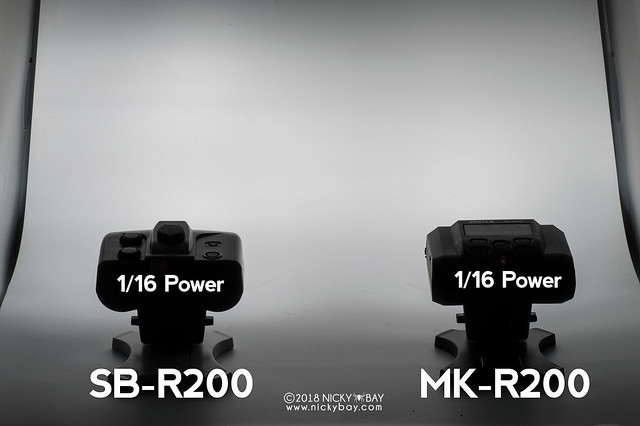
Fired both flashes at identical power settings with close to identical results.
The Meike MK-GT620 commander has an additional focal length setting from 18mm to 200mm, which I find to have no difference in the flash beam angle when I changed these settings.
6. Recycle Time
Based on specifications, the Nikon SB-R200 recycle time is 6s at full power, while the Meike MK-R200’s recycle time is 4s at full power. In terms of its behavior when the flash is recycling, the R1C1 stops the camera from taking the shot while the MK-MT24 would continue to take the shot without the flash firing. I would personally prefer to have the camera wait for the flash to recycle rather than firing blanks, but it isn’t too big a deal.
| Meike MK-R200 | Nikon SB-R200 |
| 4s | 6s |
| Full power | Full power |
7. Flash Channels and Groups
Both flash systems allow configurations for 4 channels and 3 groups. Both the commander and flashes must be set on the same channel, and different flash powers can be set for up to 3 different groups of flashes. This is completely identical to Nikon’s Creative Lighting System (CLS).
| Meike MK-MT24 | Nikon R1C1 |
| 4 channels, 3 groups | 4 channels, 3 groups |
| Compatible with MK-R200 Only (TBC) | Compatible with SB-910, SB-900, SB-800, SB-700, SB-600, SB-R200 Can also be triggered by onboard flash of D80, D90, D7000 series, D800 series. |
8. Weather Sealing
Neither flash systems specify any form of weather sealing, but I suspect that the Nikon R1C1 has a slight upper hand as all sockets are well covered but the MK-R200 has an exposed USB socket for battery charging! However, these sockets can be covered easily with cheap silicone micro-USB plugs/covers.
| Meike MK-MT24 | Nikon R1C1 |
| No weather sealing | No weather sealing |
| Exposed Sockets | Covered Sockets |
9. TTL Accuracy
I personally do not use TTL for macro work, but for the sake of this review, I have attempted several shots with the Meike flash set to TTL mode at different aperture settings, and the results were very accurate and consistent. I’ve also noted that the light colours from both systems had no visible differences.
| Meike MK-MT24 | Nikon R1C1 |
| Accurate TTL | Accurate TTL |
10. In-Built Focusing Lights
The built-in focus lights of the Nikon SB-R200 were notoriously narrow and dim, making it essentially useless. The Meike MK-R200 on the other hand has 3 LEDs which are much brighter. The MK-GT620 commander also comes with 4 LEDs which are pretty bright.
However, that had been let down by some poor design decisions. The LEDs on the flashes can only be switched on by holding onto the bulb button on the commander for 2s. The LEDs would only be activated for 15s before they switched off automatically. That really doesn’t work in the field if I needed an extra hand to switch the lights on once in every 15s! On top of that, I could not figure out what the commander’s LEDs were for as I could not fire the flash when those LEDs were on. It was a pity as those LEDs are much stronger!
| Meike MK-MT24 | Nikon R1C1 |
| Brighter Focus Lights | Dim Focus Lights |
| via on-commander button (15s) | via on-flash button |
On this point, they should have taken the cue from the Canon MT-24EX and activated the focusing lights using a double half-press of the shutter button. To take it further, have an option to deactivate the LEDs momentarily when the shot is being taken so that the focus LEDs would not appear in any highlights. That would have been perfect!
11. Flash Mounting Options
Clip-On Ring Mount
Both flash systems have identical clip-mounts which were designed to be mounted onto the chunky ring which was to be screwed in front of the lens. I would not recommend using the ring mount as it is too big and protruding, making it impossible to diffuse and light up subjects at high magnifications. Instead, mount the flashes on articulating flash arms which can elevate the flash a distance away from the subject so that proper light diffusion is possible. I have been using the FotoPro DMM-903s Macro Flash Arms to mount my flashes for the past 2 years.
Other ring mounts like Canon MT-24EX and Olympus STF-8 were a tad better because these 2 ring mounts had cold shoe mounts positioned before the lens filter thread. This allows the flashes to be positioned further away from the subject for better light diffusion. They were also significantly smaller, reducing the chances of knocking on the foliage when approaching subjects. In any case, I like the flexibility of adjusting the flash position as and when required so the FotoPro DMM-903s was perfect for me.
Hotshoe and Screw Mount Adapter
The Meike flash system did have a slight improvement on the mount by providing a tiny adapter to a female screw thread and cold shoe mount. This was much better than the flash stand that comes with the Nikon SB-R200.
12. Ergonomics & Accessories
Dials vs Buttons
The flashes for both systems look identical externally but I really prefer the buttons of the Meike MK-R200 as opposed to the physical dials of the Nikon SB-R200. This is because I had accidentally rubbed against the dials on numerous occasions and had changed the channels unintentionally, leading to some missed shots.
Onboard Flash Trigger
Nikon has a distinct advantage of allowing certain camera bodies to trigger the flashes wirelessly with just the onboard flash, doing away with the commander altogether.
Commander Hotshoe
The Meike MK-GT620 commander has an easy-to-use dial with buttons and an LCD screen. It also has a hot-shoe on top of the commander which allows another flash to be mounted. The only problem is with the location of the batteries at the bottom of the commander which makes it impossible to replace the batteries without first removing the commander from the hotshoe.
Other Accessories
I have not used any of the accessories that came with the system and can’t comment much about them. The list of accessories is readily available in online shop listings.
Sample Photos using Meike MK-MT24
I actually had the MK-MT24 for over a month before I published this review and brought it out on a couple of field trips to get a better feel of how well it works in the field. Here are some sample photos shot using the wireless flash system.
Mirror spider (Thwaitesia sp.)
The famous mirror spider was my very first subject that I practised on with the twin flash. I only managed to take a couple of record shots before it ran off and I spent a bit of time getting used to the flash controls. For more information on this spider, check out Transformation of the Mirror Spider.
Lichen huntsman spider (Pandercetes sp.)
Close up on a lichen huntsman spider that typically lives on tree trunks. With 2 lights distributed at the sides, the light from above is not as harsh.
Long-legged centipede (Scutigeridae)
With thin subjects, I had the opportunity to place the MK-R200s behind the subject to highlight the legs in this long-legged centipede.
Long-legged centipede (Scutigeridae)
Dorsal view with the MK-R200s positioned at both left and right sides of the centipede.
Photographing the long-legged centipede
This picture shows how the above 2 shots were taken, with my friend Ian Siah holding the 2 flashes for me.
Wandering spider (Ctenus sp.)
Close up on a wandering spider. With dual lights, the lower portions of the chelicerae would not be too dark.
Longhorn beetle (Epepeotes luscus)
Single shot of a very common longhorn beetle where I was also testing the new Laowa 25mm 2.5-5x lens. You would be able to see the flash diffuser shape in the compound eyes.
Orchid crab spider (Thomisus sp.)
Well camouflaged orchid crab spider with matching stripes with the flower.
Orchid crab spider (Thomisus sp.)
Close up on the ambush predator.
Marshmallow spider (Acusilas malaccensis)
This brilliantly coloured araneid typically has a tightly woven rolled leaf in the center of its orb web.
Brown tarantula (cf. Phlogiellus sp.)
Found on cavern walls, large tarantulas are typically difficult to light up well when the flashes had to be far away from the subject. With wireless flashes, I was able to position the flashes just next to the tarantula to get a better diffused lighting.
Black tarantula (cf. Phlogiellus sp.)
It was particularly difficult to light up black spiders, so the wireless flashes really came in handy here.
Pseudoscorpion (Pseudoscorpionida)
Many tiny little pseudoscorpions were found behind tree barks. This one stood still enough, just for a couple of shots.
Pill millipede (Zephroniidae)
Very cute pill millipede getting ready to walk off. When disturbed, it rolls up into a “pill” and tumbles down into the leaf litter.
Crane fly (Tipulidae)
I was lucky to find this crane fly standing upright and seemingly “asleep”. At first I thought it was already dead, but it flew off after a couple of shots. This shot was taken with one flash (Group A, 1/8 power) in front, and another from the top (Group B, 1/4 power).



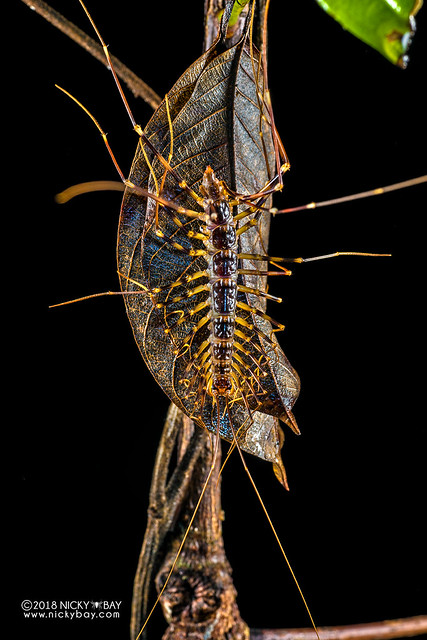










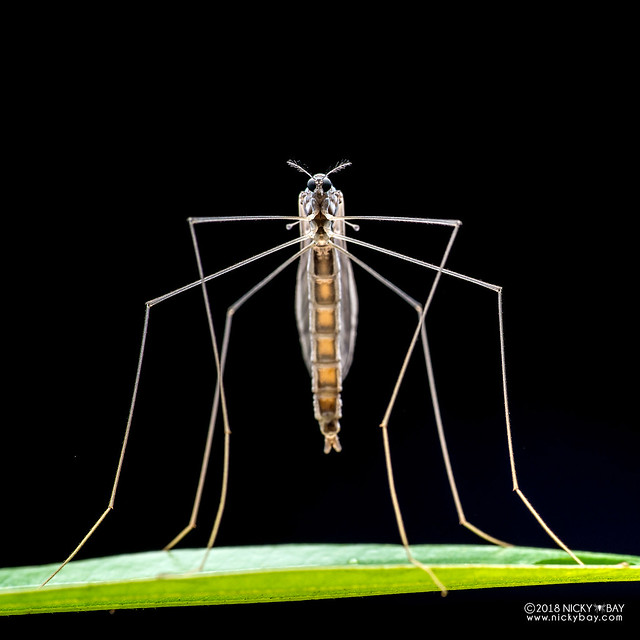
Conclusion & Recommendations
Here is a summary of the points described above with the inclusion of the popular Canon MT-24EX.
| Meike MK-MT24 |
Nikon R1C1 |
Canon MT-24EX |
|
|---|---|---|---|
| Price | US$299 (Nikon) | US$759 | US$829 |
| Trigger Signal | 2.4G Radio Frequency | Infra Red | Cable |
| Batteries (Commander) | 2xAA | 1xCR123 | 4xAA |
| Batteries (Each Flash) | 2xAAA | 1xCR123 | – |
| Weight (incl. batteries) | 408g | 446g | 524g |
| Guide No. | ISO100=10m/33ft 1 flash |
ISO100=10m/33ft 1 flash |
ISO100=21.95m/72ft 2 flashes |
| Recycle Time | 4s | 6s | 4-7s |
| Channels/Groups | 4 Channels, 3 Groups | 4 Channels, 3 Groups | – |
| Flash Compatibility | MK-R200 Only (TBC) | SB910, SB900, SB800, SB700, SB600, SB-R200. Can also be triggered by onboard flash of D80, D90, D7000 series, D800 series. |
N/A |
| Trigger Source | MK-GT620 Commander Only (TBC) | SU800, SB910, SB900, SB800, onboard flash of D80, D90, D7000 series, D800 series. | N/A |
| Weather Sealing | None | None | Unknown |
| TTL | Accurate | Accurate | Accurate |
| Focus Lights | OK | Dim | Dim |
Important Differences
The Meike MK-MT24 has several improvements over the Nikon R1C1. The most important improvements would be the use of RF signals which does not require line-of-sight, and the use of easily available AA/AAA batteries. On top of that, the Meike MK-MT24 costs less than half of a Nikon R1C1.
Owners of Nikon R1C1
For macro photographers who already own the Nikon R1C1, there isn’t any real need to invest in a new flash system unless you need the RF signal or are sick of using CR123s.
Other Macro Twin Flash Systems
Other notable twin flash systems not mentioned here include the Olympus STF-8 for M4/3 systems, Kuangren KX-800, Yongnuo YN-24EX and the relatively new Canon MT-26 EX RT. I have done a comparison of most of these flashes in the Olympus STF-8 Macro Twin Flash Review.
Recommendation
The long-term reliability and durability of the flash remains to be proven but based on its features and initial tests, the Meike MK-MT24 is the perfect choice for macro photographers who do not own any wireless twin flash system — I’ve already ordered 5 sets of the MK-R200s myself for some creative lighting work! I would also strongly recommend to use this together with flash arms such as the FotoPro DMM-903s for best lighting effects — please do not use the default ring mount as it would be very difficult to diffuse your lighting with it.
Where to Buy
You can purchase the Meike MK-MT24 on Amazon, eBay and AliExpress with variable stock status. But if you do not want the ring mounts and other accessories, get them at MacroDojo.com (it helps me a great deal if you buy from here). It is the only place where you can order the MK-R200 flash and MK-GT620 commander separately.
Update (15 June 2018): The Sony version was launched in April 2018, while the Canon version was launched towards the end of 2018.
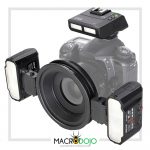 Meike MK-MT24 Meike MK-MT24 |
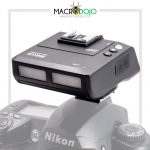 Meike MK-GT620 |
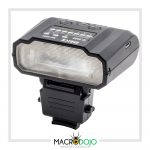 Meike MK-R200 |
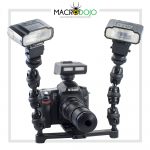 FotoPro DMM-903s |

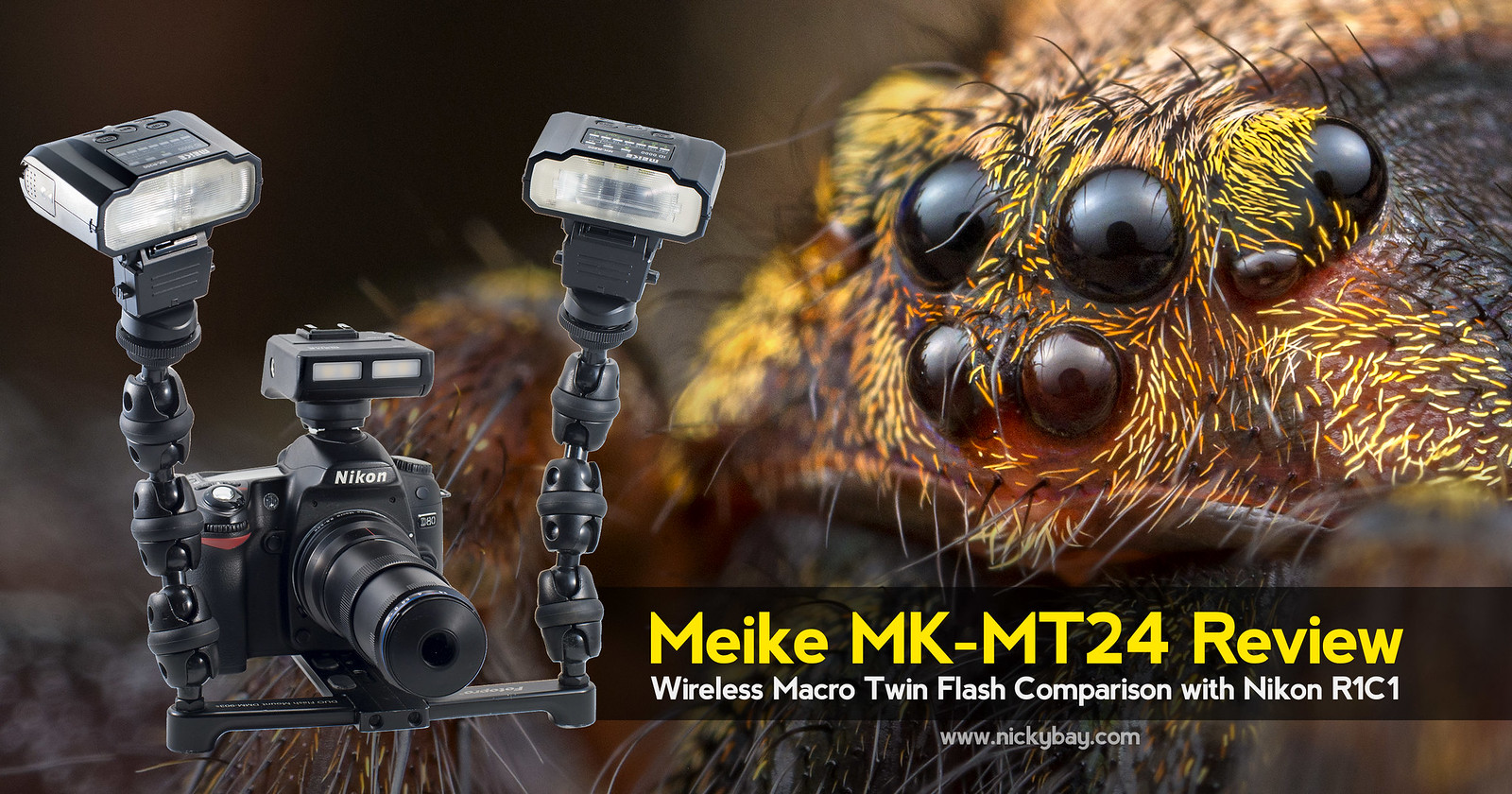
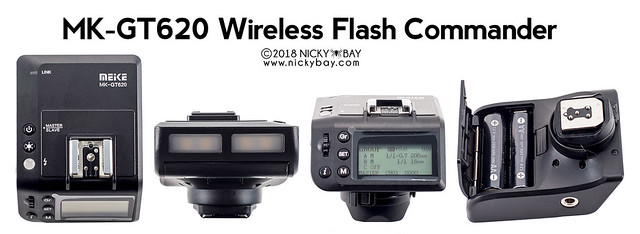

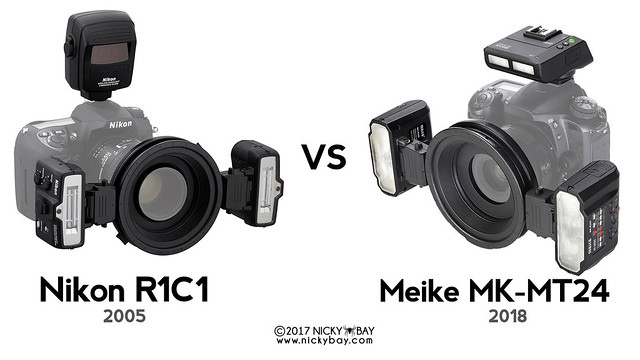
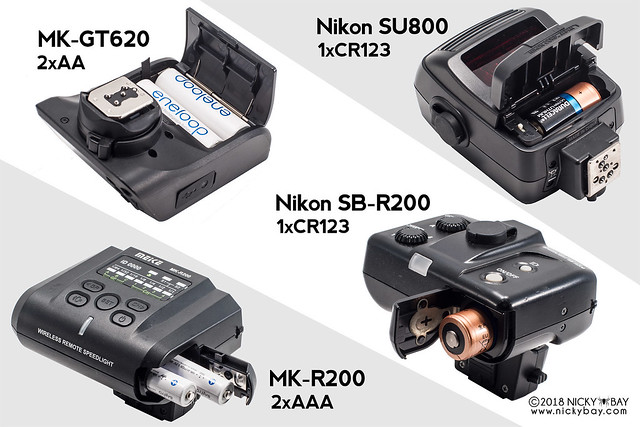


















Art
Thank for taking the time to post this review – it’s exactly what I’ve been looking for. I’ve never been able to justify the R1C1. but was curious about the Meike unit (which I’ll be buying). 🙂
Joe
Hi, thanks for this very thorough review. For doing handheld focus stacks, typically the race is on to get a lot of shots before the subject moves or you lose your balance/framing. So, to get around a long recycle time at full power, I often use a lower flash power (with higher ISO and/or multiple flash units), and then the firing rate at the lower power becomes the limiting factor. What’s the performance of these flashes like in that scenario? Can they handle firing multiple times a second over several seconds at say 1/16th power?
Chris
I have the MK-MT24 connected to my Nikon D810 with a Nikon 200mm f/4 Macro, but I found it completely useless because the light coming from it was too dull. Because of that my SB-700 flash could easily outperform it. Do you have any tips to fix this problem?
Nicky Bay
The Meike MK-MT24, like the Nikon R1C1, are not really suited for the Nikon 200mm due to the distance between the flash and the subject. To counter that, you can use flash arms to move the flash closer to the subject.
Long focal lengths tend to rely more on natural light than on flash. For flash being the primary light source, a mid focal length in the 90-105mm range would work better.